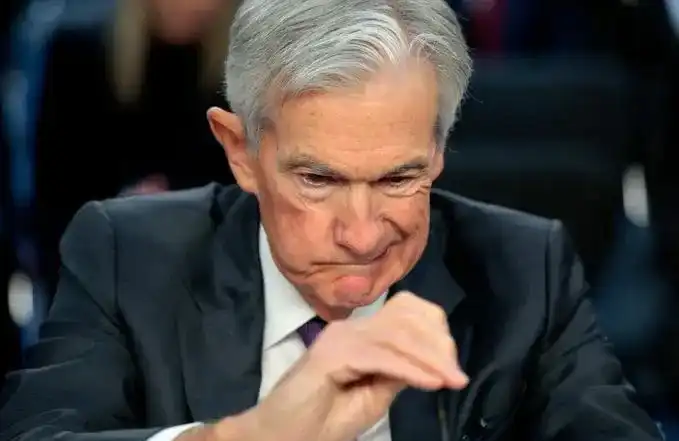Bitcoin's 20% Price Drop in 30 Days: Reasons and Future Outlook Bitcoin recently experienced a 20% price drop over the span of 30 days, leaving many in the community wondering about the causes behind this decline and what the future holds for the leading cryptocurrency. Stay tuned for expert analysis and insights on this significant price movement.
After a series of hacking incidents, market sentiment has also plummeted to freezing point, with Bitcoin falling for two consecutive days, dropping below $83,000 in the early hours of this morning. Following the $1.5 billion liquidation across the network the day before, $700 million has been liquidated across the network in the past 24 hours, with long liquidations amounting to $611 million and short liquidations to $154 million. Furthermore, in the last 24 hours, a total of 184,998 individuals worldwide have been liquidated, with the largest single liquidation occurring on Bitfinex - tBTCF0:USTF0 worth $8.2054 million.

According to Alternative data, today's cryptocurrency fear and greed index has dropped to 10 (yesterday was 25), shifting market sentiment from neutral to extreme fear, marking a new low since July 2022. In the recent market, Bitcoin has experienced multiple sharp short-term declines. Below is BlockBeats' compilation of the market reasons for Bitcoin's decline for readers' reference.

IBIT Massive Liquidation
BitMEX co-founder Arthur Hayes tweeted on February 25, suggesting that the BTC flash crash is related to IBIT's hedge fund. Many $IBIT holders are hedge funds that are long on ETFs and short on CME futures to earn higher returns than the short-term US Treasury bonds they invest in.
If the basis narrows as $BTC falls, these funds will sell $IBIT and buy back CME futures. These funds are profitable and given that the basis is close to the US Treasury yield, they will close out during US trading hours and realize profits, potentially causing Bitcoin to drop back to $70,000.

Arthur Hayes previously released a blog post predicting that because there has been no fundamental change in the US due to Trump's election, the price of cryptocurrency may fall back to the level of the fourth quarter of 2024.
Therefore, Arthur Hayes still believes that Bitcoin will retest $70,000 to $75,000. Only when the Federal Reserve, the U.S. Treasury, Japan, or other entities engage in some form of money printing, or enact specific legislation allowing for permissionless cryptocurrency innovation, can the current market conditions improve.
Bitcoin's strategic reserve policy is very poor. "The fundamental problem with governments hoarding any asset is that their buying and selling of assets are primarily for political, not financial, gain." This policy may change with shifts in the political landscape, thus altering Bitcoin's original trajectory.
Related Read: "Arthur Hayes New Article: Beyond Bitcoin National Reserves, the U.S. Cryptocurrency Hegemony Has Other Plans"
Bitcoin Strategic Reserve Expectation Yet to Materialize
Trump's plan for a strategic Bitcoin reserve has been slow to materialize, eroding market confidence. In a recent tweet, Arthur Hayes mentioned that the fundamental problem with governments hoarding any asset is that their buying and selling of assets are primarily for political, not financial, gain. And those building truly decentralized technologies and applications do not have enough resources to play politics at this critical juncture. Therefore, the desire for cryptocurrency regulation may come true. If it does come true, it will appear in an overly complex, prescriptive form, with only large, wealthy centralized companies able to afford it.
Indeed, on February 21, the probability on Polymarket of "Trump establishing a strategic Bitcoin reserve within 100 days of taking office" briefly dropped to 10%, while on January 20, the day Trump was inaugurated as president, the probability had peaked at 48%.
The expectation for a BTC strategic reserve has not been fully realized. At the national level, Trump has yet to introduce a bill for a BTC strategic reserve, and he has even been absent from the cryptocurrency market for some time. At the state level, many proposals have been raised only to be rejected.
On February 24, the Montana House of Representatives voted against a proposed bill on February 22 that had suggested making Bitcoin a state reserve asset. The bill proposed establishing a special revenue account to invest in precious metals, stablecoins, and digital assets with a market cap over $750 billion, with only Bitcoin currently meeting this criteria. Republican lawmakers opposed the bill, believing it would lead the state investment board to engage in excessive speculation with taxpayer funds, posing too much risk. Supporters argued that without passing the bill, the state government would miss the opportunity to enhance returns. Currently, the bill has been essentially shelved, and if it were to be reintroduced in the future, it would need to be resubmitted for legislative review.
On February 25, according to Cointelegraph, during the local time legislative session on February 24, the South Dakota House Commerce and Energy Committee decided to postpone HB 1202 until the "41st day" of this legislative session. However, this state legislative session has a maximum of only 40 days, so this action is equivalent to rejecting the bill, meaning that the state will not be including Bitcoin as an official investment option for now.

Related reading: "Arthur Hayes New Article: Beyond Bitcoin as National Reserves, the U.S. Has Other Cryptic Ambitions"
Is the Bull Market Still On?
On the other hand, the performance of cryptocurrency-related stocks in the U.S. stock market has been poor, leading to constraints on risk liquidity from various sides. Liquidity has been flowing from the crypto market to assets such as U.S. stocks, gold, and U.S. bonds, restricting the inflow of funds into the crypto market. Market expectations are also reflected in the market data, as follows: Coinbase (COIN) down 2.7%; Tesla (TSLA) down 2.66%; Trump Media & Technology Group (DJT) down 5.59%; MicroStrategy (MSTR) down 4.73%; MARA Holdings (MARA) down 5.12%; Riot Platforms (RIOT) down 4.67%; Hut 8 Corp. (HUT) down 8.48%
A significant part of the reason may lie in the tariff issue, which is delayed but coming. The Trump administration has stated that it will impose tariffs on Mexico and Canada on time, further strengthening the dollar's position, thereby boosting the U.S. dollar index. The risk of decreasing sales of the tech "FAAMG" stocks with high NASDAQ index weight due to tariff expectations has increased liquidity outflows, posing a risk of bursting the AI bubble.
Traders in the market have also brought out data from the previous cycle and the cycle before that, indicating that this cycle has not fundamentally changed due to Trump's election. Many traders believe we are currently in a pullback phase within the bull market, but overall, the sentiment is bearish in the short term.
cburniske believes that the current market scenario is similar to the 2021 market, suggesting that this bull market cycle is not fundamentally different from the past. Data indicates that we are actually in the mid-stage of a bull market:
During the same period in 2021, Bitcoin ($BTC) experienced a 56% decline, Ethereum ($ETH) dropped by 61%, Solana ($SOL) fell by 67%, and many other tokens saw even larger declines of over 70-80%. While there are various reasons that can be used to explain why this cycle is different from the past, the mid-term of the bull market we are currently experiencing actually has historical precedents to follow. Those who believe that the market has already entered a full bear market are actually misled.
@RaoulGMI then made a horizontal comparison with the BTC macro structure in 2017 and suggested that we might expect a new high after accepting a 2-3 month pullback:
Patience is needed as this market environment is very similar to the macro structure in 2017: Bitcoin went through five pullbacks, each with a decline of more than 28%, and most of the pullbacks lasted for 2 to 3 months before reaching new all-time highs. At the same time, other altcoins experienced around a 65% correction. During this stage, the market is filled with various noises and uncertainties. Therefore, we should focus our energy on more constructive activities rather than being distracted by market fluctuations.

Technical analyst @CryptoPainter_X believes:
The current short-term trend in the market has some support, but the overall situation is still in a range-bound state. After touching the 4-hour sub-demand area, there may be short-term support, especially when the spot premium is oscillating near the 0 axis without breaking out of the range. Since small support zones within the range are usually easily breached, attention is needed to see if the previous rhythm continues; breaking the small support may indicate a continuation of the downward range-bound movement.
Furthermore, the current price has broken below the lower limit of the range channel at 91400 (blue line), and with no long wick candlestick, the strength of any short-term rebound will determine the next move. The blue line coincides with the core demand area, theoretically providing short-term support. However, as the channel is likely to descend and possibly turn, the long-term trend remains bearish, indicating the market may face further downward pressure.
Overall, although a short-term rebound may occur, if there is no breakthrough above the midline or out of the range, the market may still maintain a weak range-bound trend.

Welcome to join the official BlockBeats community:
Telegram Subscription Group: https://t.me/theblockbeats
Telegram Discussion Group: https://t.me/BlockBeats_App
Official Twitter Account: https://twitter.com/BlockBeatsAsia
 Forum
Forum OPRR
OPRR Finance
Finance
 Specials
Specials
 On-chain Eco
On-chain Eco
 Entry
Entry
 Podcasts
Podcasts
 Data
Data



 Summarized by AI
Summarized by AI







